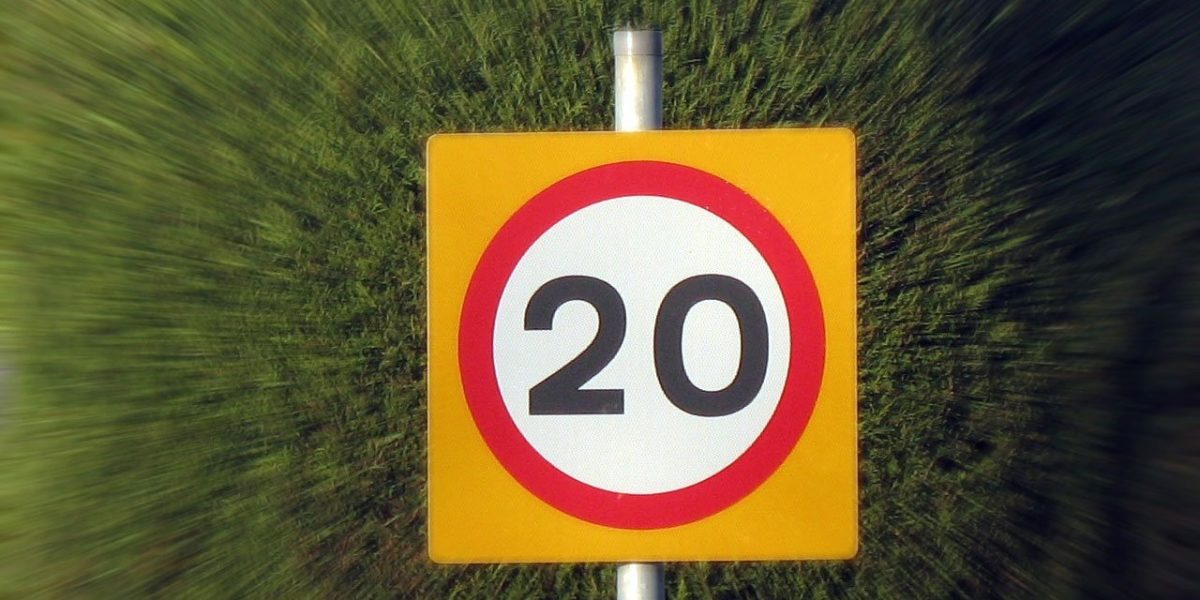Wales puts it foot down
New default 20 mph limit in Wales backed by new research report in Scotland
Wales has now made the default speed limit in urban areas 20 mph instead of 30mph.
It follows four years of work between the Welsh Government and local authorities, police and road safety experts. They have designed a change in law, making Wales the first UK nation to reset the default speed limit for local roads.
Slow moves
Many local authorities around Britain have introduced 20 mph zones. However, these are small areas, generally, and enforcement is very patchy. The lack of national legislative changes means many authorities, including stretched police forces fail to prioritise the suggested limits.
Wales has changed the national law and made it a mandatory default speed limit.
The EU and the United Nations have both been pushing for lower speed limits in urban and built up areas. This is intended to reduce road casualties, deaths, emergency costs and lost working days and income to industry.
Town and country
A study by Edinburgh Napier University has shown that the rollout of 20mph speed limits across the Scottish Borders has reduced average speeds by 3mph.
Previous research shows that there is an average 4% reduction in collisions with each 1mph reduction in average speed on rural roads.
The latest study demonstrates the significant knock-on effect the new speed limit is likely to have. In particular, when seen within the context of the national Road Safety Framework to reduce deaths and serious injuries to zero by 2050.
Proven potential
The Scottish trial took place across 97 villages and towns in the Borders from October 2020. It shows that 85% of drivers dropped their speed by 3mph. It also showed that the largest speed reductions were observed in locations where higher speeds had been seen in the past. These areas witnessed an average reduction of 5.4mph.
Significantly, the report also concluded that the change in driver behaviour continued well after the beginning of the trial. It has meant that average speeds remain well below previous levels eight months on from the trial.
This is the first trial in the world to look at the effects of a 20mph speed limit on such a large, rural area. The results will be studied by governments, local authorities and organisations across the UK and the world.
A first
In the Welsh speed limit changes, it is the first nation in the UK to adopt 20mph as the default speed limit on restricted roads . These are generally roads that are located in residential and built-up areas where there are significant numbers of pedestrians.
Professor Adrian Davis of Edinburgh Napier’s Transport Research Institute led the research.
“Previous research has shown that 20mph speed limits are effective in large towns and cities in both reducing speed driven and in reducing casualties,” he says.
“Our work looking at speed changes reveals that speed reduction to 20mph from 30mph in rural settlements produces similar results”.
Communities have often been asking for action to reduce speeding, addressing the dangerous and anti-social impacts.
“Our research findings consequently support the switch in Wales”.
Putting the foot down
The changes in Wales are described as “ the biggest step change in community safety for a generation”
As well as saving lives and preventing injuries, it also encourages more people to walk and cycle.
This is the assessment of Lee Waters, Wales’ deputy minister for climate change.
While the move has evoked criticism, the Welsh Government has long maintained it is evidence led.
Mr Waters said: “The hardest hitting fact is that if a pedestrian is struck by a vehicle moving at 30mph, they are around five times more likely to be killed than if they are hit at 20mph. It’s simple: lower speeds save lives.
“By the time a car travelling at 20mph has come to a stop, a car travelling at 30mph will still be doing 24 mph.”
It also points to evidence from Spain, where the speed limit on the majority of roads was changed to 30km/h in 2019.
Since then, Spain has reported 20% fewer urban road deaths, with fatalities reduced by 34% for cyclists and 24% for pedestrians.
Unconvinced
There have been mixed reviews for the move in Wales. One criticism is the merit of implementing a blanket approach.
IAM RoadSmart has described the evidence as “not yet firmly established”. It questions whether it would be better to have 20mph limits on specific streets which may bring greater public compliance.
Nicholas Lyes, director of policy and standards at IAM RoadSmart, says the move will “provoke plenty of emotion”.
“Local, individual schemes to reduce speed through communities are often popular with residents,” continues Lyes. However, he warns that “poor compliance can often lead to pedestrians and cyclists having a false sense of security”.
“As a road safety charity, we support efforts to reduce speeding through training and education.
“However, given the limited resources that roads authorities and police forces have, we believe it would be better to have 20mph limits on specific streets where there are schools, hospitals and where risks to vulnerable road users are at their highest, along with traffic calming measures and effective enforcement.
“ If this were the case, we suspect compliance would be far better than simply sticking up 20mph signs and hoping for the best.”






